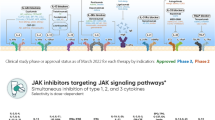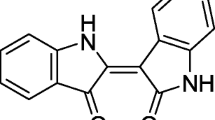Abstract
Bisphenol A (BPA) is known as an estrogen-mimic environmental hormone which has the ability to indirectly stimulate the production of allergic inflammation-related cytokines. Cudrania tricuspidata Bureau (CTB) has been used in Korean folk medicine for a long time. In order to determine the inhibitory effect of a glycoprotein (CTB glycoprotein, 75 kDa) isolated from CTB fruits on the activities of allergic inflammation-related cytokines (TNF-α and IL-6) caused by BPA, we evaluated the activities of protein kinase C (PKC), p38 mitogen-activated protein kinase (p38 MAPK), nuclear factor (NF)-κB, and inflammation-related cytokine (TNF-α and IL-6) in the BPA-induced HMC-1 cells using immunoblot analysis and RT-PCR. The results obtained from this study revealed that CTB glycoprotein (100 μg/ml) inhibits the translocation of PKC from cytosol to the membrane, the phosphorylation of p38 MAPK, the activation of NF-κB, and the expression levels of TNF-α and IL-6. Taken together, the results in this study suggest that CTB glycoprotein inhibits the expression of allergic inflammation-related cytokines (TNF-α and IL-6) by blocking NF-κB and p38 kinase in BPA-induced HMC-1 cells.







Similar content being viewed by others
References
An RB, Sohn DH, Kim YC (2006) Hepatoprotective compounds of the roots of Cudrania tricuspidata on T acrine-induced cytotoxicity in Hep G2 cells. Biol Pharm Bull 29:838–840
Azzolina A, Bongiovanni A, Lampiasi N (2003) Substance P induces TNF-alpha and IL-6 production through NF kappa B in peritoneal mast cells. Biochim Biophys Acta 1643:75–83
Baumgartner RA, Deramo VA, Beaven MA (1996) Constitutive and inducible mechanisms for synthesis and release of cytokines in immune cell lines. J Immunol 157:4087–4093
Bergmeyer HU, Bernt E (1974) Lactate dehydrogenase. In: Bergmeyer HU (ed) Methods of enzymatic analysis, 2nd edn. Academic Press, New York, pp 574–579
Blackwell TS, Blackwell TR, Christman JW (1997) Impaired activation of nuclear factor-kappaB in endotoxin-tolerant rats is associated with down-regulation of chemokine gene expression and inhibition of neutrophilic lung inflammation. J Immunol 158:5934–5940
Bradding P, Holgate ST (1999) Immunopathology and human mast cell cytokines. Crit Rev Oncol Hematol 31:119–133
Brotons JA, Olea-Serrano MF, Villalobos M, Pedraza V, Olea N (1995) Xenoestrogens released from lacquer coatings in food cans. Environ Health Perspect 103:608–612
Goto M, Takano-Ishikawa Y, Ono H, Yoshida M, Yamaki K, Shinmoto H (2007) Orally administered bisphenol A disturbed antigen specific immunoresponses in the naïve condition. Biosci Biotechnol Biochem 71:2136–2143
Han EH, Park JH, Kim JY, Jeong HG (2009) Houttuynia cordata water extract suppresses anaphylactic reaction and IgE-mediated allergic response by inhibiting multiple steps of FceRI signaling in mast cells. Food Chem Toxicol 47:1659–1666
Hong MH, Lee JY, Jung H, Jin DH, Go HY, Kim JH, Jang BH, Shin YC, Ko SG (2009) Sophora flavescens Aiton inhibits the production of pro-inflammatory cytokines through inhibition of the NF kappaB/IkappaB signal pathway in human mast cell line (HMC-1). Toxicol In Vitro 23:251–258
Ilieva I, Ohgami K, Shiratori K, Koyama Y, Yoshida K, Kase S, Kitamei H, Takemoto Y, Yazawa K, Ohno S (2004) The effects of Ginkgo biloba extract on lipopolysaccharide-induced inflammation in vitro and in vivo. Exp Eye Res 79:181–187
Joo HY, Lim KT (2009) Glycoprotein isolated from Cudrania tricuspidata Bureau inhibits iNO and COX-2 expression through modulation of NF-κB in LPS-stimulated RAW 264.7 cells. Environ Toxicol Pharmacol 27:247–252
Kanerva L, Estlander T, Keskinen H, Jolanki R (2000) Occupational allergic airborne contact dermatitis and delayed bronchial asthma from epoxy resin revealed by bronchial provocation test. Eur J Dermatol 10:475–477
Kim MS, Na HJ, Han SW, Jin JS, Song UY, Lee EJ, Song BK, Hong SH, Kim HM (2003) Forsythia fructus inhibits the mast-cell-mediated allergic inflammatory reactions. Inflammation 27:129–135
Kimata M, Shichijo M, Miura T, Serizawa I, Inagaki N, Nagai H (1999) Ca2+ and protein kinase C signaling for histamine and sulfidoleukotrienes released from human cultured mast cells. Biochem Biophys Res Commun 257:895–900
Krishnan AV, Stathis P, Permuth SF, Tokes L, Feldman D (1993) Bisphenol-A: an estrogenic substance is released from polycarbonate flasks during autoclaving. Endocrinology 132:2279–2286
Lee SJ, Lim KT (2009) Glycine- and proline-rich glycoprotein regulates the balance between cell proliferation and apoptosis for ACF formation in 1, 2-dimethylhydrazine-treated A/J mice. Mol Cell Biochem 325:187–197
Lee MH, Chung SW, Kang BY, Park J, Lee CH, Hwang SY, Kim TS (2003) Enhanced interleukin-4 production in CD4+ T cells and elevated immunoglobulin E levels in antigen-primed mice by bisphenol A and nonylphenol, endocrine disruptors: involvement of nuclear factor-AT and Ca2+. Immunology 109:76–86
Lewis TS, Shapiro PS, Ahn NG (1998) Signal transduction through MAP kinase cascades. Adv Cancer Res 74:49–139
Lim S, Choi JW, Kim HS, Kim YH, Yea K, Heo K, Kim JH, Kim SH, Song M, Kim JI, Ryu SH, Suh PG (2008) A myristoylated pseudosubstrate peptide of PKC-zeta induces degranulation in HMC-1 cells independently of PKC-zeta activity. Life Sci 82:733–740
Lowry OH, Rosebrough NJ, Farr AL, Randall RJ (1951) Protein measurement with the Folin phenol reagent. J Biol Chem 193:265–275
Manthey CL, Wang SW, Kinney SD, Yao Z (1998) SB202190, a selective inhibitor of p38 mitogen-activated protein kinase, is a powerful regulator of LPS-induced mRNAs in monocytes. J Leukoc Biol 64:409–417
Mosmann T (1983) Rapid colorimetric assay for cellular growth and survival: application to proliferation and cytotoxicity assays. J Immunol Meth 65:55–63
Neville DM Jr, Glossmann H (1974) Molecular weight determination of membrane protein and glycoprotein subunits by discontinuous gel electrophoresis in dodecyl sulfate. Meth Enzymol 32:92–102
Oh PS, Lim KT (2008) Plant glycoprotein modulates the expression of interleukin-1beta via inhibition of MAP kinase in HMC-1cells. Biosci Biotechnol Biochem 72:2133–2140
Oh PS, Lim KT (2010) Modulatory effects of phytoglycoprotein (75 kDa) on allergic inflammatory cytokines in di(2-ethylhexyl) phthalate (DEHP)-stimulated RBL-2H3 cells. J Cell Biochem 109:124–131
Oh PS, Lee SJ, Lim KT (2006) Hypolipidemic and antioxidative effects of the plant glycoprotein (36 kDa) from Rhus verniciflua stokes fruit in Triton WR-1339-induced hyperlipidemic mice. Biosci Biotechnol Biochem 70:447–456
Park HH, Lee S, Son HY, Park SB, Kim MS, Choi EJ, Singh TS, Ha JH, Lee MG, Kim JE, Hyun MC, Kwon TK, Kim YH, Kim SH (2008) Flavonoid inhibits histamine release and expression of proinflammatory cytokines in mast cells. Arch Pharm Res 31:1303–1311
Patton WF, Dhanak MR, Jacobson BS (1989) Differential partitioning of plasma membrane proteins into the triton X-100-insoluble cytoskeleton fraction during concanavalin A-induced receptor redistribution. J Cell Sci 92:85–91
Segura JJ, Jimenez-Rubio A, Pulgar R, Olea N, Guerrero JM, Calvo JR (1999) In vitro effect of the resin component bisphenol A on substrate adherence capacity of macrophages. J Endod 25:341–344
Seo WG, Pae HO, Oh GS, Chai KY, Yun YG, Kwon TO, Chung HT (2000) Inhibitory effect of ethyl acetate fraction from Cudrania tricuspidata on the expression of nitric oxide synthase gene in RAW 264.7 macrophages stimulated with interferon-gamma and lipopolysaccharide. Gen Pharmacol 35:21–28
Shapiro L, Dinarello CA (1995) Osmotic regulation of cytokine synthesis in vitro. Proc Natl Acad Sci USA 92:12230–12234
Shim JU, Lim KT (2009) Inhibitory effect of glycoprotein isolated from Cudrania tricuspidata Bureau on expression of inflammation-related cytokine in bisphenol A-treated HMC-1 cells. Inflammation 32:211–217
Shin TY, Oh JM, Choi BJ, Park WH, Jun CD, Kim SH (2006) Anti-inflammatory effect of Poncitus trifoliate fruit through inhibition of NF-kappaB activation in mast cells. Toxicol In Vitro 20:1071–1076
Takai Y, Tsutsumi O, Ikezuki Y, Hiroi H, Osuga Y, Momoeda M, Yano T, Taketani Y (2000) Estrogen receptor-mediated effects of a xenoestrogen, bisphenol-a on preimplantation mouse embryos. Biochem Biophys Res Commun 270:918–921
Tian X, Takamoto M, Sugane K (2003) Bisphenol A promotes IL-4 production by Th2 cells. Int Arch Allergy Immunol 132:240–247
Washiyama M, Sasaki Y, Hosokawa T, Nagumo S (2009) Anti-inflammatory constituents of Sappan Lignum. Biol Pharm Bull 32:941–944
White JR, Pluznik DH, Ishizaka K, Ishizaka T (1985) Antigen-induced increase in protein kinase C activity in plasma membrane of mast cells. Proc Natl Acad Sci USA 82:8193–8197
Yamashita U, Sugiura T, Yoshida Y, Kuroda E (2005) Effect of endocrine disrupters on macrophage function in vitro. J UOEH 27:1–10
Yan H, Takamoto M, Sugane K (2008) Exposure to bisphenol A prenatally or in adulthood promotes T(H)2 cytokine production associated with reduction of CD4CD25 regulatory T cells. Environ Health Perspect 116(4):514–519
Yurino H, Ishikawa S, Sato T, Akadegawa K, Ito T, Ueha S, Inadera H, Matsushima K (2004) Endocrine disruptors (environmental estrogens) enhance autoantibody production by B1 cells. Toxicol Sci 81:139–147
Acknowledgements
This work was supported by the Korea Research Foundation Grant funded by Korean Government (MOEHRD, Basic Research Promotion Fund; KRF-2008-521-C00167).
Author information
Authors and Affiliations
Corresponding author
Rights and permissions
About this article
Cite this article
Lee, J., Lim, KT. Expression of TNF-α and IL-6 in HMC-1 cells treated with bisphenol A is attenuated by plant-originating glycoprotein (75 kDa) by blocking p38 MAPK. Naunyn-Schmied Arch Pharmacol 382, 51–61 (2010). https://doi.org/10.1007/s00210-010-0527-4
Received:
Accepted:
Published:
Issue Date:
DOI: https://doi.org/10.1007/s00210-010-0527-4




